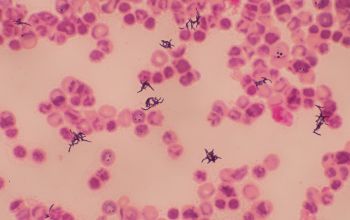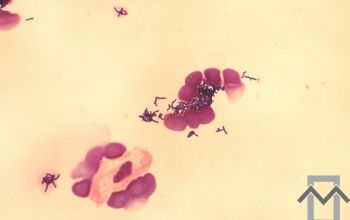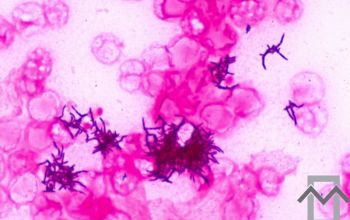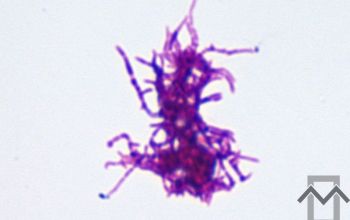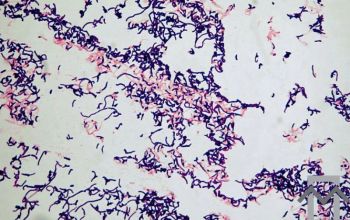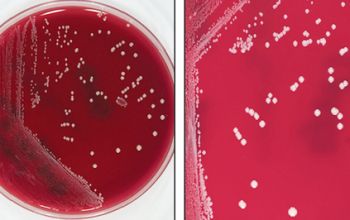Propionibacterium acnes (Cutibacterium acnes)
-
General information
Taxonomy
Family: Propionibacteriacea
Genus: Cutibacterium acnes
Formely: Propioni acnes
P. acnes group:
- P. acnes
- P. avidum
- P. granulosum
- P. lympophilum
Natural habitats
Probionibacterium species are predominant indigenous flora of the skin, but also can be recovered from the gastrointestinale tract, upper respiratory tract and the urogenitale tract.
Because of their prescence on skin, Propionibacterium are often contanminants of specimens such as blood or other body fluids obtained through skin puncture.
Clinical significance
Found as secundary agents of infected sinuses, wounds, and abscesses.
-
Gram stain
Pleomorphic, branched and un branched rods, coccoid forms, or bifid.
Cells are often "club shaped" and occurs in sinly, in pairs or short chains, or in clumps.
0.5-0.8 by 1.0-5.0 µm
Can confused with some species of Corynebacterium or Clostridium.
-
Culture characteristics
-
Anaerobic and aerotolerant
BBAØ: colonies appear convex, semi opaque, and glitening.
Colonies have been seen pigmented in an array of colors from white to red.
-
-
Characteristics
-
References
James Versalovic et al.(2011) Manual of Clinical Microbiology 10th Edition
Karen C. Carrol et al (2019) Manual of Clinical Microbiology, 12th Edition
https://journals.healio.com/doi/10.3928/01477447-20191213-02 photo
Hardy Diagnosics

